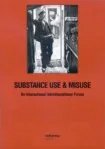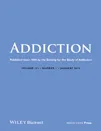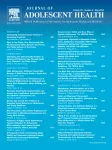 Accueil
Accueil
Mots-clés
|
Thésaurus mots-clés > Caractéristiques des populations > Caractéristiques sociodémographiques > Situation socio-professionnelle > CATEGORIE SOCIO-PROFESSIONNELLE
CATEGORIE SOCIO-PROFESSIONNELLESynonyme(s)CLASSE SOCIALE ;CSP PROFESSION |
Documents disponibles dans cette catégorie (371)
 Ajouter le résultat dans votre panier Faire une suggestion Affiner la recherche
Ajouter le résultat dans votre panier Faire une suggestion Affiner la recherche
Rapport
FRANÇAIS : Les conduites addictives constituent un problème de santé publique préoccupant. Elles sont susceptibles d'avoir un impact sur la vie professionnelle et d'engager la responsabilité de l'entreprise en cas d'accident. Elles peuvent mena[...]
Article : Périodique
We examined trends in cigarette, alcohol, and marijuana use by eventual educational attainment in 1,902 participants from Project EAT, a 10-year longitudinal study following participants from early adolescence through young adulthood. Generally,[...]
Article : Périodique
R. MELOTTI ; J. HERON ; M. HICKMAN ; J. MACLEOD ; R. ARAYA ; G. LEWIS |Objective: To examine the association between use of alcohol and cigarettes among adolescents and their early socioeconomic background. Methods: Members of a longitudinal birth cohort (Avon Longitudinal Study of Parents and Children [ALSPAC], Un[...]
Article : Périodique
Aims: To estimate whether parental socio-economic status (SES) is associated with adolescent drinking, and the degree to which a possible association may be accounted for by various parental factors. Design and setting: Cross-sectional Norwegia[...]
Article : Périodique
S. LEGLEYE ; M. KHLAT ; H. J. AUBIN ; D. BRICARD |Purpose: The "alcohol harm paradox" has been evidenced among adults, but it is still largely unexplored among adolescents. We examined in a sample of French adolescents the relation between family socioeconomic status (SES), family living arrang[...]
Périodique
C. SCHUSTER ; P. M. O'MALLEY ; J. G. BACHMAN ; L. D. JOHNSTON ; J. SCHULENBERG | 2001ENGLISH : This report uses data from a nationally representative longitudinal sample to examine the relationship of marijuana use by high school seniors to occupational attainment 10 years later. Analyses were conducted separately by gender, w[...]
Rapport
L. AUVRAY ; P. LE FUR | Paris : CREDES (Centre de Recherche d'Etude et de Documentation en Economie de la Santé) | Rapport du CREDES | 2002Les adolescents de 11 à 20 ans représentent un peu plus de 13% de la population française. L'étude présente un certain nombre de résultats sur la santé de ces jeunes et sur leur comportement de recours aux soins de médecins au cours de cette pér[...]
Livre
Choc des générations et générations de la crise, chômage des jeunes intellectuels précaires, jeunes des cités et violences urbaines : autant de problèmes de société où il est question d'âges et de générations. Que peut en dire la sociologie ? L[...]
Article : Périodique
BACKGROUND: Research regarding socio-economic differences in alcohol and drug use in adolescence yields mixed results. This study hypothesizes that (1) when using education type as a proxy of one's social status, clear differences will exist bet[...]
Article : Périodique
U. GRITTNER ; S. KUNTSCHE ; G. GMEL ; K. BLOOMFIELD |BACKGROUND: International comparisons of social inequalities in alcohol use have not been extensively investigated. The purpose of this study was to examine the relationship of country-level characteristics and individual socio-economic status ([...]
Article : Périodique
BACKGROUND: This research examines the specific contribution of occupation and work organization conditions to alcohol use and misuse. It is based on a social-action model that takes into account agent personality, structures of daily life, and [...]
Chapitre
Malgré une consommation en baisse depuis plusieurs décennies, l'alcool reste la substance psychoactive la plus consommée en France : seulement 8,4 % des personnes de 12 à 75 ans déclarent n'avoir jamais bu de boissons alcoolisées (vin, bière, al[...]
Périodique
DURCY M. | 2006FRANÇAIS : Susceptible de provoquer des troubles de la vigilance, de la mémoire immédiate, de l'équilibre... la consommation excessive de substances psychoactives peut avoir de graves conséquences sur les comportements au travail. Ce sujet n'es[...]
Chapitre
N. GUIGNON | 1990Longtemps l'alcool a été le premier fléau social. Sa consommation diminue. Il est près d'être détrôné par le tabac dont la nocivité est de mieux en mieux connue, et dont la consommation n'est stabilisée que depuis peu. Outre leur toxicité respec[...]





